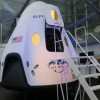Sorry, no content matched your criteria.
Featured Story
Here's How to Invest in SpaceX if its Rocket Failure Makes an IPO Less Likely

The explosion of the SpaceX Falcon 9 rocket on Sunday looks likely to rattle investors' nerves enough to quash any talk of Elon Musk taking his company public anytime soon. But space enthusiasts have a way to get exposure to SpaceX right now, according to Money Morning's Defense & Tech Investing Specialist, Michael Robinson.
The failed attempt to resupply the International Space Station represents a serious setback...
The explosion of the SpaceX Falcon 9 rocket on Sunday looks likely to rattle investors' nerves enough to quash any talk of Elon Musk taking his company public anytime soon. But space enthusiasts have a way to get exposure to SpaceX right now, according to Money Morning's Defense & Tech Investing Specialist, Michael Robinson.
The failed attempt to resupply the International Space Station represents a serious setback...
